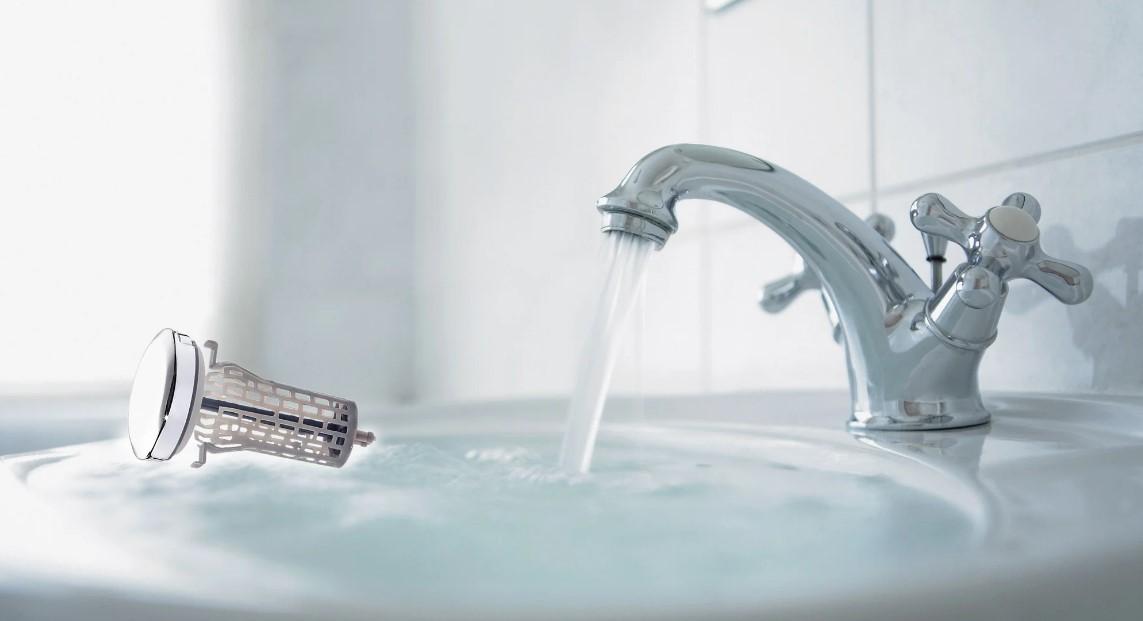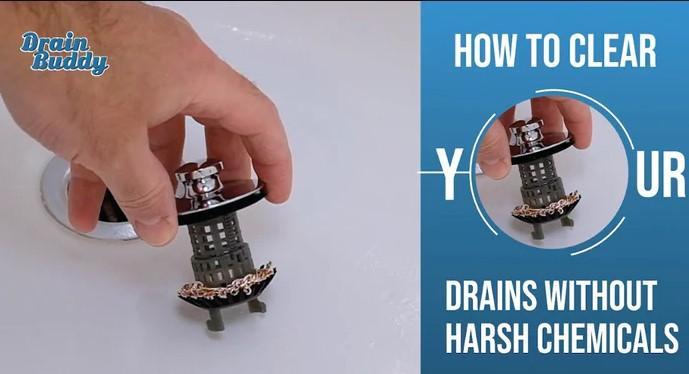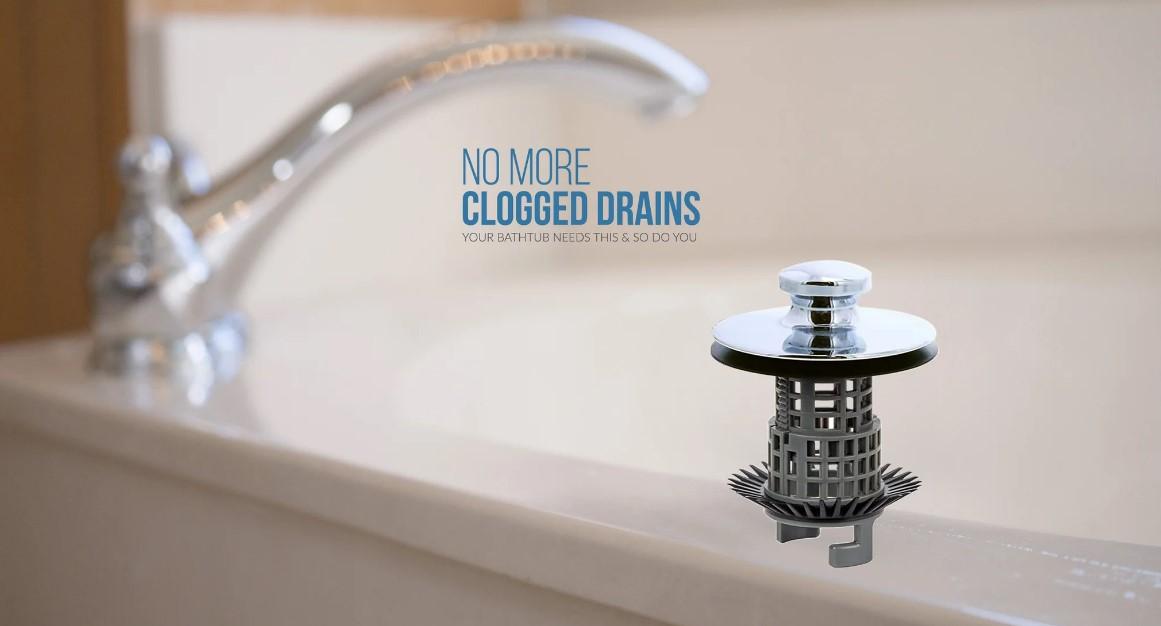When it comes to household plumbing Sink Stoppers can be a real headache. They might get stuck, leak, or fail to seal properly. Fortunately, many of these issues can be resolved easily without calling a plumber. In this guide, we will explore various DIY sink stopper solutions, highlighting common problems and their fixes. We’ll also showcase the benefits of products from Drain Buddy Ultra Flo, your go-to source for high-quality sink stoppers and drain stoppers.
Understanding Sink Stoppers
A sink stopper, also known as a sink drain stopper, is a device that seals the drain of a sink to hold water in it. It comes in various types, including rubber, pop-up, and lift-and-turn stoppers. While they serve the same purpose, each type has unique installation and maintenance needs. Understanding these differences is essential when addressing problems or performing repairs.

Common Problems with Sink Stoppers
Several issues can arise with sink stoppers. Some of the most frequent include:
-
Stuck Stoppers: Stoppers can get jammed, preventing them from moving freely.
-
Leaking Stoppers: If the stopper doesn’t seal correctly, water can leak out.
-
Broken Mechanism: The mechanism that operates the stopper may break, leading to functionality issues.
-
Dirt and Debris Buildup: Over time, debris can accumulate, causing drainage problems.
In the following sections, we’ll dive deeper into these common problems and provide practical solutions.
Stuck Stoppers
Causes of Stuck Stoppers
A stuck sink stopper can be a real inconvenience. It often happens due to:
-
Debris Buildup: Food particles and grime can accumulate around the stopper.
-
Corrosion: Older metal parts can corrode, causing the stopper to stick.
-
Incorrect Installation: If the stopper isn’t installed correctly, it can jam.
Easy Fixes for Stuck Stoppers
-
Check for Obstructions: Remove any visible debris around the stopper. You can use a cloth or a brush to clean it out gently.
-
Lubricate the Mechanism: If the stopper is stuck due to rust or corrosion, applying a few drops of lubricant can help. Use a plumber’s grease or silicone spray for the best results.
-
Remove and Reinstall: If the stopper remains stuck, consider removing it. After cleaning and lubricating, reinstall it carefully to ensure it fits correctly.
-
Use Vinegar and Baking Soda: Pouring a mixture of vinegar and baking soda down the drain can help dissolve debris. Let it sit for about 30 minutes before flushing with hot water.
Leaking Stoppers
Causes of Leaking Stoppers
A leaking sink stopper can lead to significant water waste. Common causes include:
-
Worn-out Rubber Gaskets: Over time, the rubber gaskets can wear down, failing to create a proper seal.
-
Misalignment: If the stopper is not aligned correctly with the drain, it can leak.
-
Cracks in the Stopper: Stoppers can develop cracks, leading to leaks.
Easy Fixes for Leaking Stoppers
-
Inspect and Replace Gaskets: Check the rubber gaskets for signs of wear. If they appear damaged, replacing them is essential. This simple fix can often resolve leaking issues.
-
Adjust Alignment: Ensure that the stopper is correctly aligned with the drain. Loosen the stopper’s mechanism and adjust it as needed.
-
Sealant Application: For minor cracks, using a waterproof sealant can help. Apply the sealant around the damaged area and let it cure before testing the stopper.
-
Replace the Stopper: If the damage is extensive, it may be best to replace the entire stopper. Consider investing in a high-quality Sink Stopper from Drain Buddy Ultra Flo. These products are designed for durability and optimal sealing.
Broken Mechanism
Causes of Broken Mechanisms
A broken mechanism often results from:
-
Wear and Tear: Over time, the moving parts can wear out.
-
Improper Use: Excessive force when operating the stopper can cause damage.
-
Corrosion: Metal components can corrode, leading to failures.
Easy Fixes for Broken Mechanisms
-
Inspect the Components: Open the mechanism and check for broken or worn-out parts. Look for any signs of rust or damage.
-
Lubricate Moving Parts: Applying lubricant to the moving parts can help improve functionality. Use a high-quality plumber’s grease to ensure long-lasting effects.
-
Tighten Loose Connections: Check for any loose screws or fittings. Tightening them can often restore proper functionality.
-
Replace Broken Parts: If you find damaged components, replace them. You can purchase replacement parts from Drain Buddy Ultra Flo to ensure compatibility and quality.
Dirt and Debris Buildup
Causes of Dirt and Debris Buildup
Over time, sinks can accumulate dirt and debris, leading to drainage issues. Causes include:
-
Food Particles: If you frequently wash dishes, food particles can build up around the stopper.
-
Soap Scum: Soap can create a sticky residue that attracts dirt and grime.
-
Hair and Fibers: Hair can easily get caught in the stopper mechanism, contributing to clogs.
Easy Fixes for Dirt and Debris Buildup
-
Regular Cleaning: Make a habit of cleaning your sink stoppers regularly. Use warm, soapy water and a soft brush to scrub away any buildup.
-
Use a Drain Strainer: Investing in a drain strainer can help catch debris before it reaches the stopper. This simple solution can significantly reduce maintenance.
-
Flush with Hot Water: Periodically flushing the drain with hot water can help dissolve any soap scum or residue that may be building up.
-
Vinegar and Baking Soda Solution: As mentioned earlier, using vinegar and baking soda can effectively break down buildup. This solution is not only natural but also safe for your plumbing.
Choosing the Right Sink Stopper
When selecting a sink stopper, consider the following:
-
Material: Sink stoppers come in various materials, including rubber, plastic, and metal. Choose a material that suits your needs and budget.
-
Type: Different types of stoppers include pop-up, lift-and-turn, and flat stoppers. Each has its mechanism and ease of use.
-
Brand: Opt for reputable brands like Drain Buddy Ultra Flo, known for their quality and durability. Their sink stoppers are designed to last, minimizing the need for frequent replacements.
Frequently Asked Questions
What is the best type of sink stopper?
The best type of sink stopper depends on your preferences and sink type. Pop-up stoppers are popular for their convenience. Lift-and-turn stoppers offer a sleek design, while rubber stoppers are easy to install and maintain. Consider the features that matter most to you and choose accordingly.
How do I install a sink stopper?
Installing a sink stopper is relatively straightforward. Start by removing the old stopper, if necessary. Then, follow the manufacturer's instructions for the new stopper. Ensure that it fits snugly in the drain. Adjust the mechanism as needed, and test it by filling the sink with water.
How often should I replace my sink stopper?
Generally, you should replace your sink stopper every 2-5 years, depending on wear and tear. However, if you notice leaks or functionality issues, it’s best to replace it sooner. Regular maintenance can extend the life of your stopper.
Can I use a sink stopper in the bathtub?
While sink stoppers are designed for sinks, some can be used in bathtubs as well. Ensure that the dimensions are compatible with your bathtub drain. Always refer to the product specifications before purchasing.

Final Lines
Sink stoppers are essential components of your plumbing system. Knowing how to troubleshoot and fix common issues can save you time and money. Whether dealing with stuck stoppers, leaks, or dirt buildup, the solutions provided here can help you maintain a functional sink.
For high-quality Sink Drain Stopper and drain stoppers, choose Drain Buddy Ultra Flo. Our products are designed for durability and reliability, making them the perfect choice for any home. If you have any questions or need assistance, don’t hesitate to contact us. We're here to help you with all your sink stopper needs!



